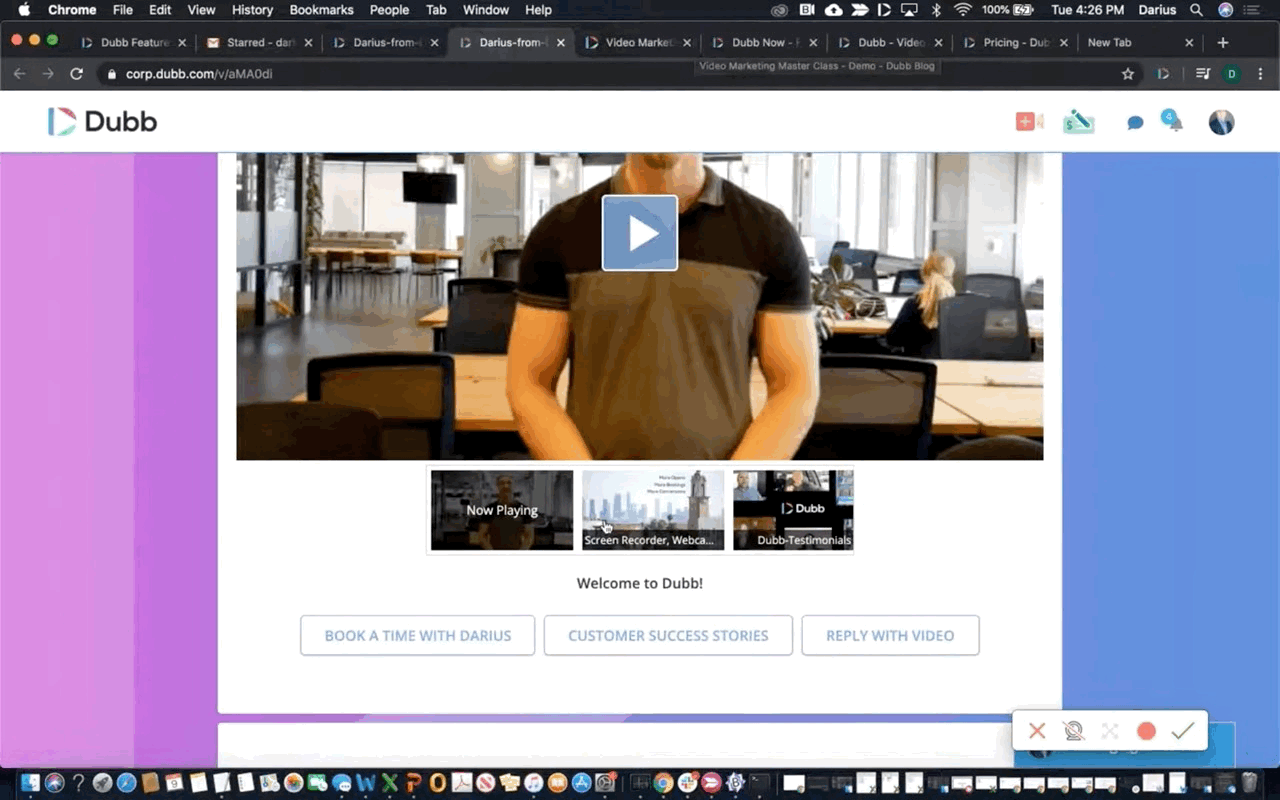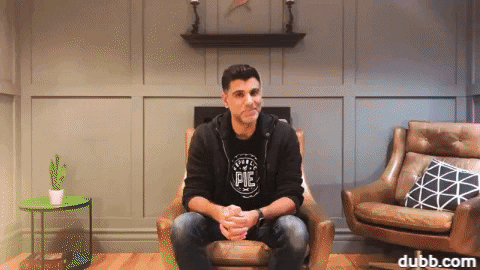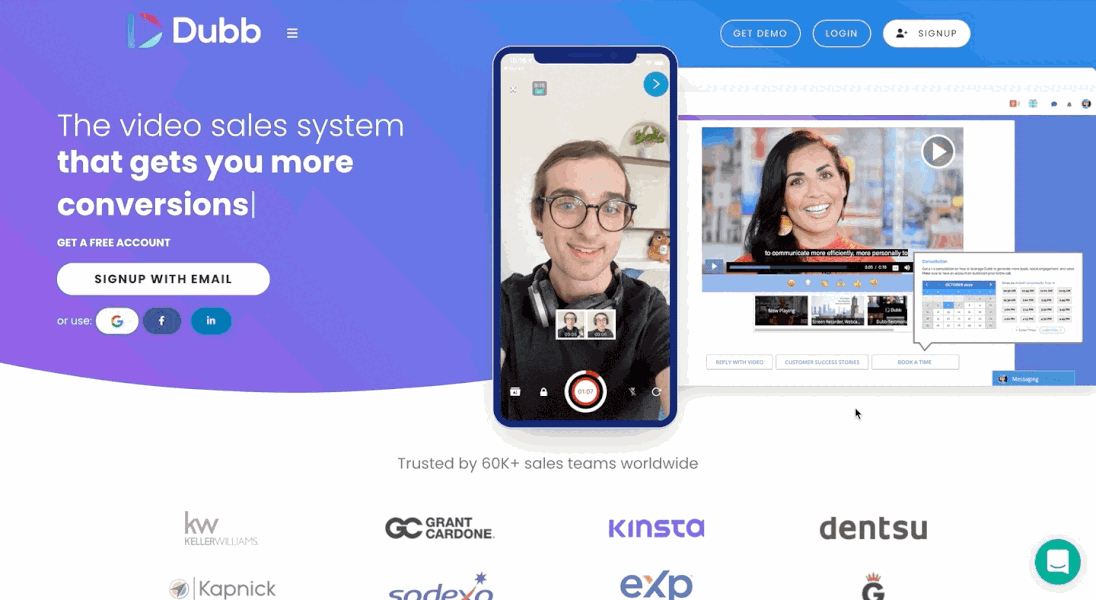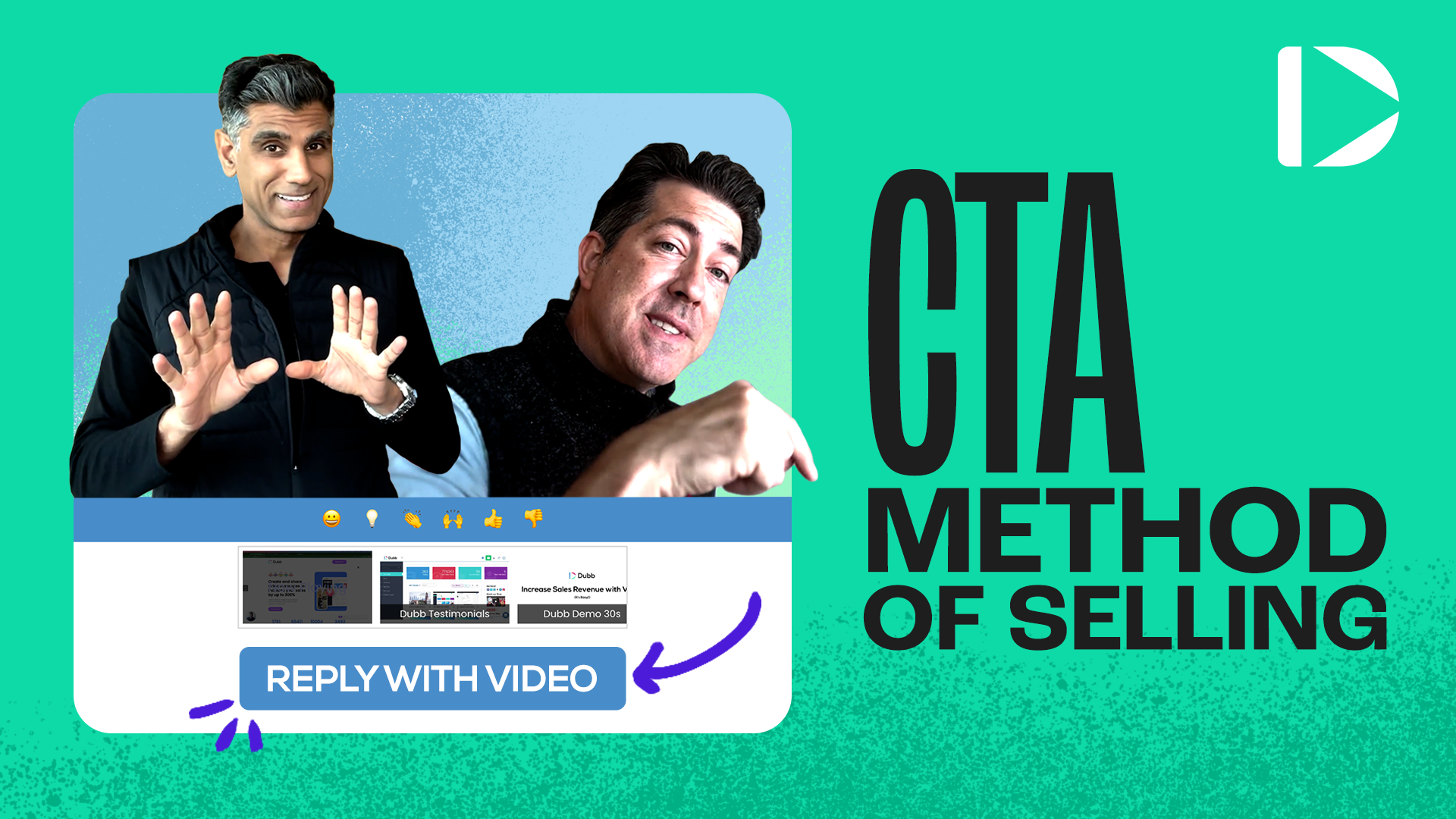In this recap from a recent episode of RevShow, Rob and I spoke about the Call to Action Method of selling. Whether you are a brand new sales professional or are a sales leader that is looking for a better way to achieve your goals, you can use the Call to Action Method to build better relationships and increase your conversion rate. If you want to watch the video in its entirety, go ahead and click on the play button above. Enjoy!
What is your call to action?
It is a simple question, yet it is extremely important in helping you reach your sales goals. The call to action is the language of sales. It is the thing that you want your contacts and prospects to pursue in your engagement. This is what brings in more clients and helps you reach those short-term and long-term objectives.
Because calls to action are so important, we are going to take a deep dive into the Call to Action Method of selling. This sales strategy is a fantastic way to build your brand equity, transform cold prospects into warm prospects, and convince those warm prospects to purchase your product or service.
So are you ready? Let’s jump into the Call to Action Method of selling and get you much closer to better customer relationships, more conversions, and more efficient work.
Defining the Call to Action
To get the most out of the Call to Action Method of selling, it is important to first discuss what a call to action is. You can think of a call to action as the currency of your sales. It is what you want the person on the other end to pursue. Just think about it: it is the call to action. In other words, what action can he or she take?
You can think of this as a directed path where you have some piece of content and a specific thing that you want your audience to pursue. Let’s break this down further. In terms of content, it can be everything from a synchronous piece of content (like a clip from a Zoom meeting) or an asynchronous piece of content (like a Dubb video). Whatever it is, this piece of content or engagement creates some sort of value in your audience’s minds. From there, let’s talk about the specific thing that your audience should pursue. That specific thing can be things like a form, button, or checkout page.
Focusing on your call to action is one of the most important things in getting conversions. This is because most of the time, people don’t know what step to pursue. For instance, they may watch a really interesting video that your company produced, but without a call to action, they may not know what to do next. In some circumstances, they may be proactive and reach out to your company to learn more. However, it’s probably more likely that the interested audience members will simply churn away. It is a missed opportunity to nurture those interested prospects, build stronger relationships, and generate more sales.
With a call to action, however, your audience gets some much-needed clarity. It makes it very clear what you want them to do. It also makes it clear how they can receive the value that you and your company are offering. This type of clarity is extremely valuable, both for you and your audience. By clearly drawing a line of how your audience can advance the relationship, you make it much more likely that your audience further engages with your company (and potentially makes a purchase).
Getting Your Audience to Lean In
While I may be biased, one of the reasons why Dubb is so fantastic is that we focus on actionable videos. This is different from other video platforms (like YouTube). We started Dubb with a focus on helping sales and marketing professionals make video content that generates sales. It is this sales-focused orientation that separates Dubb from many other video platforms out there.
For instance, you may have just had a prospect that loved your message on a video you created. You may have met that prospect at a conference and sent them a personalized video on a product or service that may help them accomplish their goals. If you send that video through another video service (like YouTube), that prospect may not know how to advance the relationship. Sure, they can proactively reach out to you or your organization to follow up, but for some prospects, this is too onerous. If you sent them a Dubb video, however, that prospect can leverage plenty of different calls to action below your video. More on this in a bit, however.
Ultimately, the way I think about this can be summed up in this phrase: get their chair to squeak. Most of the time, when people watch videos, they are leaned back. They are relaxed and are being entertained. They aren’t leaning in, clicking things, and pursuing some of the ideas and concepts discussed in the video. However, if they are leaned forward in their chairs, their chairs will speak. But more importantly, they are now engaged. They can click on their mice, pull out their credit cards, pick up their phones, and send you emails.
This is a fundamental thing that you want people to do. After all, the squeaky wheel gets the conversion. By leveraging the Call to Action Method of selling, you can bring your viewers forward, have them become more engaged with your video content, and make it easier for them to click on the buy button. You are effectively creating a relationship with someone on the other end of your video. In fact, it is called a parasocial relationship. This means that people who you may not even know are connected with you. They may recognize you if they see you in a crowd or at an event. You may even seem like a celebrity to them.
This parasocial relationship is such an important part of the video sharing process. We need to lean into it and leverage it as much as possible. At the end of the day, people aren’t doing business with other businesses. They are doing business with people. Whether you are a service provider or have a product, people will make a connection to the individuals behind the company.
So create that parasocial relationship. Speak into the camera and act as if you are speaking into someone’s eyes. It works.
The Best Types of Calls to Action
With this background in mind, let’s talk about some of the calls to action that should be grabbing your attention. There are countless numbers of calls to action that you can apply to your sales work. The key, however, is to focus on the ones that are going to drive the most connections, conversations, and conversions.
We are going to discuss several different calls to action that you’ll want to use in your sales videos. At the same time, recognize that this isn’t a completely inclusive list. If you think that there is a call to action not mentioned here that can supercharge the course of your business, feel free to experiment with it. At Dubb, you have the ability to experiment with all different types of call to action buttons, so don’t hesitate to do so.

Direct Calendar Booking
This call to action makes it extremely easy for viewers to book a meeting on your calendar. The reason why this is so important is that most sales representatives want that chance to talk to that prospect. By doing so, they can talk about the value that comes with their product or service. So when you have a sales video, you want to actually mention in the video that you want the viewer to book a time with you. You also want an option below your video so the viewer can actually book that appointment on your calendar. Even better is if the video includes you (or one of your colleagues) pointing below to the booking button. This is a great best practice for your sales videos. No matter what your call to action buttons are, make sure you are physically pointing down. While it may seem funny, this is where you want your viewer to go.
Dubb offers integrations with most of the popular calendar booking platforms (like Calendly or Book Like a Boss). Once your viewer is finished watching your video, he or she can quickly book a follow-up appointment to learn more about your product, service, or company. These call to action buttons are extremely helpful, and at Dubb, we have found that the “book me” call to action is one of the options that is used the most.
Reply with Video
This is one of my favorite call to action options on Dubb. Essentially, what this call to action does is let your viewer reply to your video with a video of their own. It works like this. Let’s say that you created a sales video, and at the end, you say something like, “You can book a time with me below. Or you can hit the reply with video button and send me back your thoughts or questions.” It can be as simple as that.
On a basic level, the reply with video call to action offers pure efficiency. Replying with video can be much easier than typing out a lengthy email response. If your viewer is in a hurry, yet wants to reach back out to you or your company, they can simply click on a button and start talking. It is yet another way that you can provide value to prospects, customers, and other members of your audience.
It gets better, however. With a reply with video call to action, you can easily gather video testimonials. Video testimonials are fantastic tools to generate social proof, which helps you build trust in your business. If a new prospect comes across your company and sees a video testimonial page, they are much more likely to be interested in your products, services, and company. That said, some businesses shy away from video testimonials because they think it is too difficult to gather them. The job is much easier with Dubb’s reply with video button, however. You can say something like, “Hey, I’m so glad that you love our products and services. I’d really appreciate it if you can give me two seconds, hit the reply with video button below, and send me a quick testimonial. I would love to add it to our showcase page.” This is a super easy way to gather video testimonials without even needing to meet.
So if you are contemplating several different call to action buttons for your Dubb videos, I highly recommend that you choose this one.
Case Studies
Another great call to action is sending links to your case studies. Like reply with video, case studies are fantastic ways to generate social proof. To be clear, case studies don’t need to be individual case studies on your website. They can be part of a white paper, eBook, or something else. Ultimately, you want to share stories of how other people have gained success with you or your company.
This is a great call to action for prospects that are just hearing about your company or organization. If you have created a stellar white paper or eBook that talks about your product, services, or company, you can include a link to a more formal white paper or eBook you created. This can further nurture the relationship and help educate your viewer about the value that your company can provide.
Just remember: at the end of the day, it is about what others say about us, not what we say about ourselves. Case studies are fantastic ways to show that social proof and build trust with your organization. This is what really makes an impact on your conversions.

Display Your Manifesto
This call to action comes from the hit 1990s movie Jerry Maguire. This can be your company manifesto, your personal manifesto, or both. Essentially, you are describing your mission and what you are trying to solve. By doing this, you can show how you (and your company) are able to help people.
As just one example of this, here is an example of the Dubb Manifesto. When people check this out, they really understand the essence of the value that we are trying to bring to the world. We start the manifesto by describing the problem we are trying to solve. Essentially, it describes how sales has lost its personal touch, whether you are communicating through cold emailing, phone calls, or text messages. We then discuss the human struggle and our vision (which leverages the power of video to connect, converse, and convert).
If you haven’t yet created a manifesto, go ahead and give it a try. And if you already have? Consider making it one of your calls to action. It can add some value to the customer relationship and help your audience understand what your organization is truly about.
Complete a Form
This call to action is a great way to get more granular information about a particular prospect. However long your form is, you can use the information received in that form to better interact with your viewer. In other words, you can better customize the sales experience and increase your chances of a getting a conversion.
Your form can be however long or short you like. Keep in mind, however, that the longer the form, the greater the chance that your viewer doesn’t complete the form. Use your best judgment here and try to find a happy medium.
Communicate Over Facebook Messenger
Sometimes, your viewers may not want to submit their phone number or email address. They may just be hearing about your company and want to complete some initial research before starting the sales relationship. In this situation, Facebook Messenger can be a great way to communicate with the viewer. In other situations, that viewer may simply prefer Facebook Messenger because they spend a significant amount of time on the platform. Whatever the case may be, this can be an attractive call to action option.
Follow a Link
This is a standard call to action that you can find on many sales-focused video platforms. Essentially, you can program your call to action button to link to another website. It is as simple as that.
The great thing about this call to action is its flexibility. You can link to any website that you’d like. Whether you want to link to a separate page on your website or a purchase page, the choice is yours. Pretty great, right?
Ghosting, Rejection, and Break Ups
Here is what the Call to Action Method of selling is going to do for you. It is going to show you the money. It is going to help you build those strong relationships, show prospects the value of your products or services, and make it more likely that you generate sales.
Yet at the same time, ghosting is a real possibility. After all, we are sales and marketing professionals. We have all been ghosted. In sales, you are ghosted, broken up with, or rejected. These are three terrible things, yet they happen all the time. One of the best ways to fight against these three things is to use actionable videos. Essentially, you want to make sure that the video is valuable and that you are including a call to action with that video.
In other words, if you are ghosted by someone, send them a Dubb video. Make sure that Dubb video has value within every single element of that video. Include some of the call to action options that we mentioned above. By doing so, you will be in a fantastic position to turn that ghost into a living, breathing, human being.
If you are getting rejected by someone? Make sure your video has a clear call to action at the end. Explain why your product or service is going to add value to their life. Focus on changing the rejection into an exception.
And if you broke up with a client? Let’s say a particular customer was using your product or service, but they ended up breaking up with you. Alternatively, you may have a prospect that seemed interested at the top of your sales funnel, but then broke off the relationship. To bring the breakup back to love, send a video with clear value. When you have a clear call to action with this video, you put the odds on your side. You make it easier to reinvigorate that relationship and get that sale.
In the end, the Call to Action Method of selling is about adding value, creating those relationships, and helping your audience make a purchase. By buying into the Call to Action Method of selling now, you are in a fantastic position to accomplish your sales goals. I wish you the best of luck!

At Dubb, we are always thinking about ideas and strategies like the Call to Action Method of selling. If you have any questions about any of the concepts discussed in this post, feel free to contact our team. You can also click here to learn more about Dubb and click here to sign up for a free 14-day trial of our premium plans.


